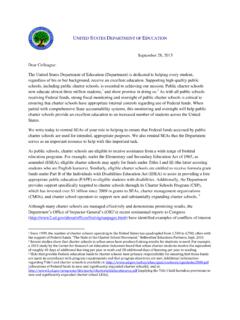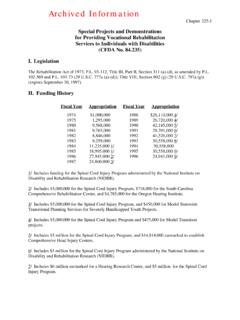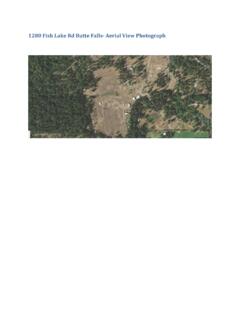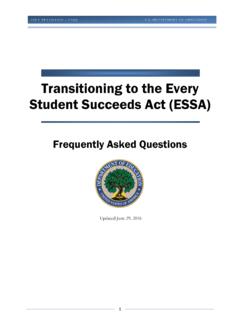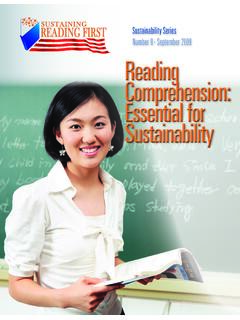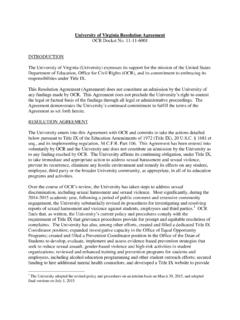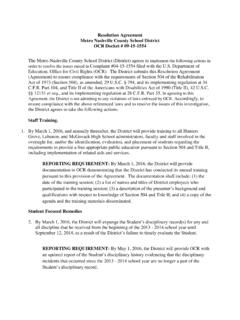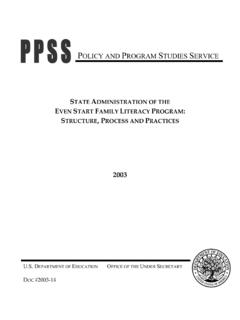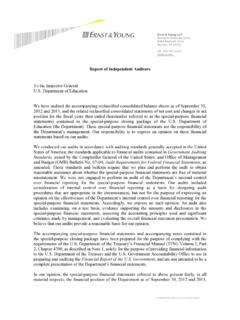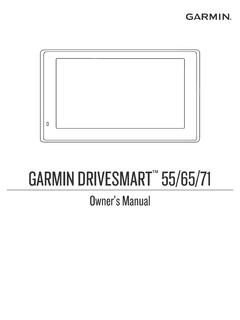Transcription of Logic models: A tool for effective program planning ...
1 Logic models: A tool for effective program planning , collaboration, and monitoringWendy Kekahio Brian Lawton Mid-continent Research for Education and LearningUniversity of Hawaii at ManoaLouis Cicchinelli Paul R. Brandon Mid-continent Research for Education and LearningUniversity of Hawaii at ManoaThis guide, an installment in a four-part series on Logic models, describes the role of Logic models in effective program planning , collaboration, and monitoring. It defines the four components of these models resources, activities, outputs, and outcomes and explains how they connect. Using Logic models can help practitioners and evaluators better understand a program s mechanics and structure and chart a course toward improved policy and Logic model is a visual representation of the assumptions and theory of action that underlie the struc-ture of an education program .
2 A program can be a strategy for instruction in a classroom, a training session for a group of teachers, a grade-level curriculum, a building-level intervention, or a district- or statewide initiative. Developing a Logic model at the beginning of program planning gives you a framework for charting the links between your program s resources, activities, and outputs and its intended outcomes. It enables you to evaluate your program once it begins. And it helps you communicate to your stakeholders what you want to accomplish, how you intend to reach your goals, and how you will track your a program requires time, effort, participation, and collaboration of stakeholders, including stu-dents, teachers, administrators, community members, policymakers, and program evaluators.
3 Using Logic models in this process can help practitioners and evaluators better understand a program s mechanics and structure and chart a course toward improved policy and guide is an installment in a four-part series on Logic models and program planning and The four guides introduce Logic models to educators new to the concept and provide a refresher for edu-cators who are familiar with Logic models but who have not recently developed Department of EducationAt Mid-continent Researchfor Education and Learning2 Defining the Logic model componentsLogic models connect your work to your expected outcomes often expressed in changes in student perfor-mance and achievement. Included in most Logic models are four components: resources, activities, outputs, and outcomes.
4 Resources are the raw materials needed to create the program , implement its activities, and attain the desired outputs and outcomes. Sometimes called inputs, resources include both material items (such as curricula, instruction materials, facilities, and funding) and nonmaterial items (such as time, community support, and specialized knowledge and skills). Activities are the processes, actions, and events through which the program resources achieve the intended outcomes; they are the steps in implementing a program . Examples include collaborating with partners, developing training or curriculum materials, conducting training sessions or work-shops, and collecting and analyzing student performance data. Outputs are tangible, often process-oriented results or products typically expressed in numbers, such as number of students tested, number of teachers trained, and number of books read.
5 While outputs provide information derived from the completion of program activities, they cannot indi-cate whether a change has occurred. For example, an output can tell you how many teachers attended training but not whether the training increased the teachers knowledge of the training topic. Short- and mid-term outcomes are the changes in program participants knowledge, beliefs, and behavior due to their involvement in the program . Outcomes can also be quick adjustments in organizational practices or system design. Short-term outcomes are observable almost immediately after participation; mid-term outcomes can take months or years to emerge and typically build toward long-term outcomes. Long-term outcomes, sometimes called impacts, are a program s lasting influences.
6 Like short- and mid-term outcomes, long-term outcomes can be changes in knowledge, beliefs, and behavior. Examples include higher student achievement scores, increased high school graduation rates, and greater college acceptance are required to demonstrate a program s success. Which outcomes are included in a Logic model depends on the program s goals. Some programs have only short-term goals and outcomes, while others have only long-term ones. And not all programs differentiate among short, mid-, and long term. For example, a Logic model for a program that offers class field trips to local institutions, such as art galleries or museums, might have the outcome of increasing student awareness of and interest in local cultural, artistic, or histor-ical sites, without specifying whether the outcome will occur during, on completion of, or sometime after the field your program s Logic model components will take practice and collaboration.
7 Some programs will involve only a few resources, activities, outputs, and outcomes; others will involve many. The number of each should match your program s complexity, and the specificity of each can vary. Important resources, activities, outputs, and outcomes might be identified separately (for example, for a program to conduct a workshop), and less important or similar ones might be clustered and displayed together (for example, conduct interviews and administer a survey might be grouped as collect data on program satisfaction ).Connecting the Logic model componentsLogic models show the connections linking a program s resources, activities, outputs, and outcomes (figure 1). These connections depict how the program is expected to operate how each component will influence another to attain the intended outcomes.
8 The connections can guide your program from start 3 Figure 1. Sample Logic model for a teacher training program on alternative reading strategiesResourcesDevelop andprovide teachingguides andsample lessonsConductteacherworkshopsNumber andtype of guidesand samplelessons for eachgrade levelNumber ofparticipants perworkshop andtotal hours eachparticipantattended theworkshopIncreasedteacherknowledge ofmultipleinstructionstrategies toteach readingIncreasedteacherknowledge ofreading contentIncreasedteacher use ofalternativestrategies forpresentingreading contentIncreasedpositive studentattitudes towardlearningIncreasedstudentunderstand ing ofreading contentIncreasedstudent readingtest scoresResearch-basedguidance onreadingstrategiesCurriculumcoordinator sElementaryschool
9 TeachersActivitiesOutputsShort-termoutco mesMid-termoutcomesLong-termoutcomesSour ce: finish. For example, an activity can influence an output, and that output can influence a short-term outcome. Making these connections can help you anticipate your program s flow and can illustrate the interdependencies across figure 1, research-based guidance, curriculum coordinators, and elementary school teachers are the resources required to implement a teacher training program on alternative reading strategies. Research-based guidance and curriculum coordinators are necessary for developing and providing teaching guides and sample lessons. Curriculum coordinators and elementary school teachers are needed to conduct the teacher workshops.
10 The outputs of these two activities are the number and type of teaching materials distributed for each grade level and the number of participants per workshop and the number of hours each participant attended the workshops. These outputs connect to two short-term outcomes: increased teacher knowledge of instruction strategies to teach reading and increased teacher knowledge of reading content. The short-term outcomes support the mid- and long-term outcomes: increased teacher use of alternative strategies for presenting reading content, increased positive student attitudes toward learning, increased student understanding of reading content, and finally increased student reading test properly constructed, Logic models reflect the elements of a program and convey the underlying theory of action how the program s resources, activities, and outputs lead to desired This guide serves as a companion to the Education Logic model computer-based application developed by Regional Educational Laboratory (REL) Pacific administered by Mid-continent Research for Educa-tion and Learning.
